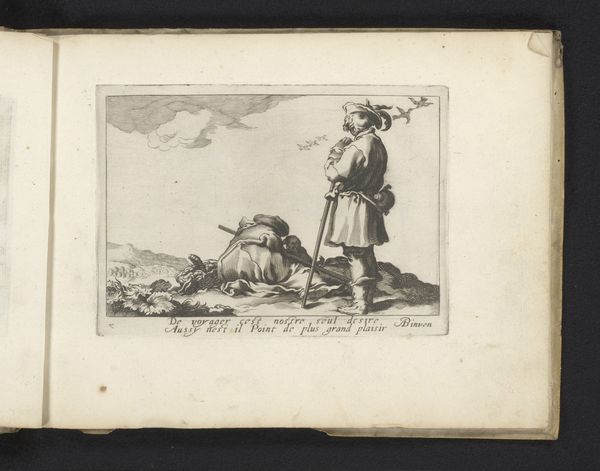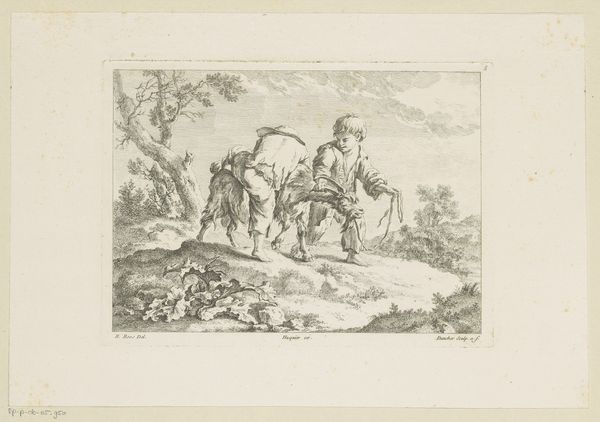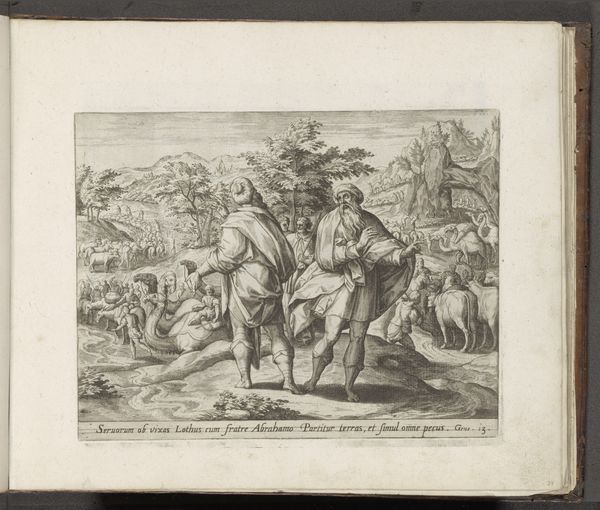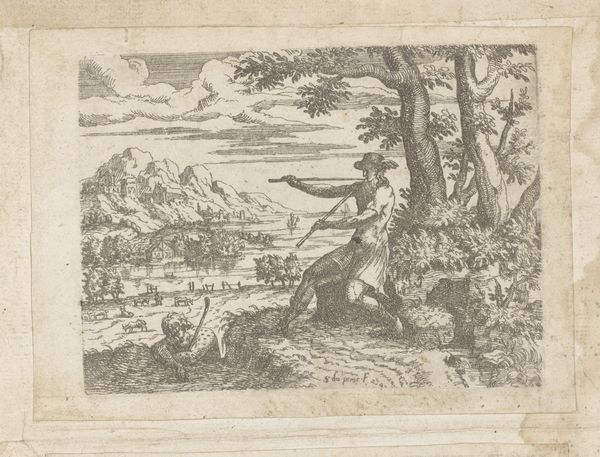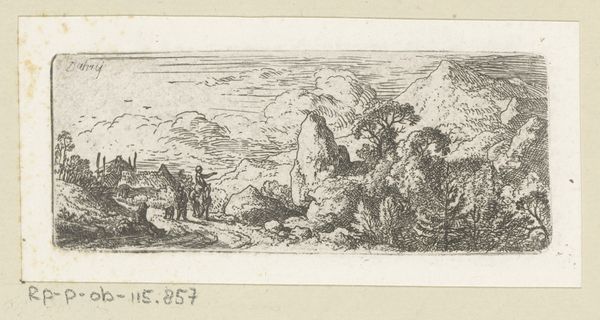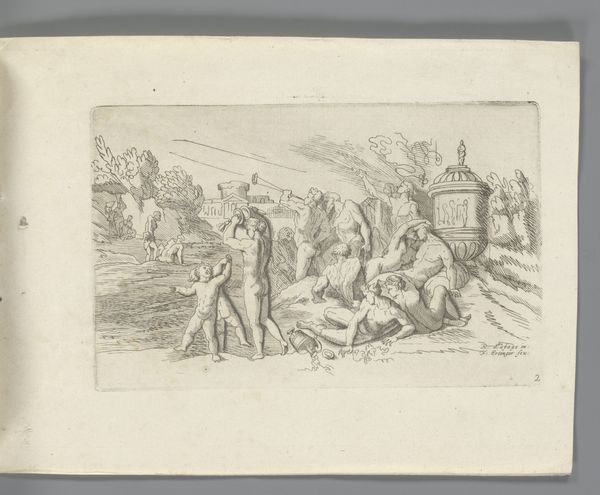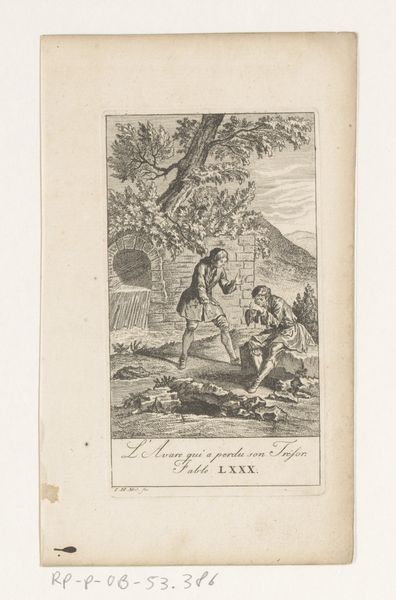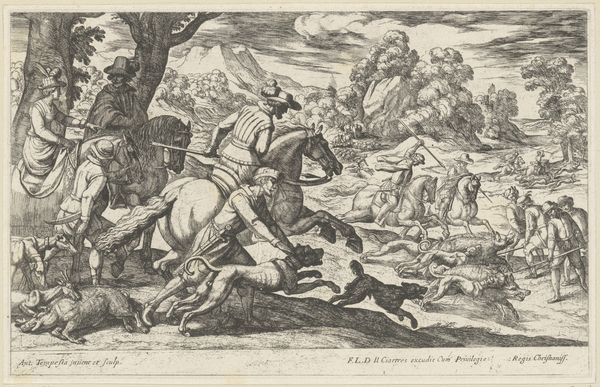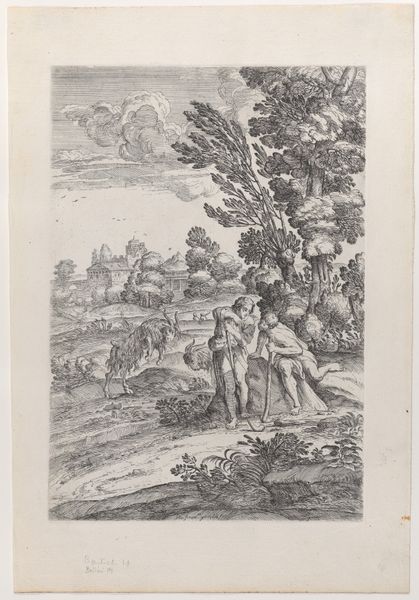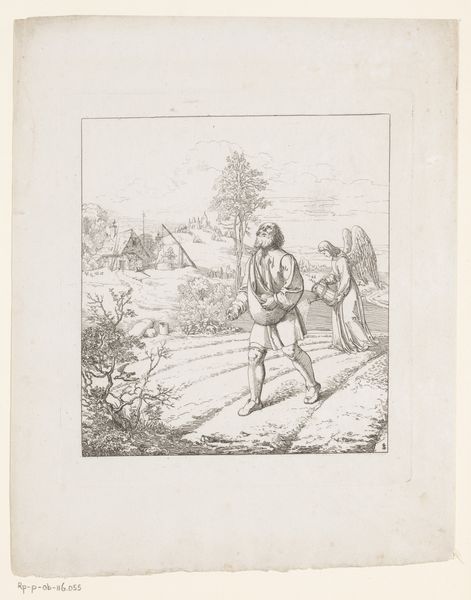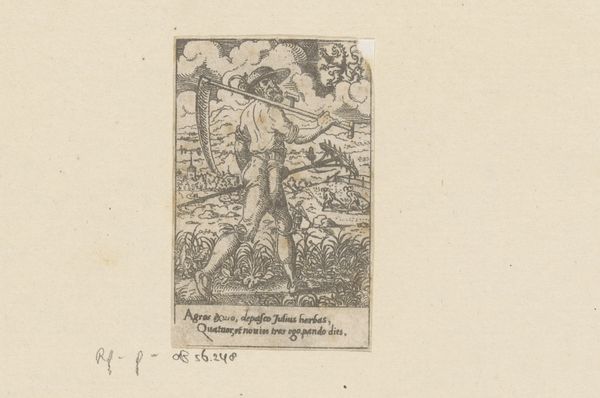
print, engraving
#
narrative-art
# print
#
landscape
#
figuration
#
romanticism
#
genre-painting
#
history-painting
#
engraving
Dimensions: height 122 mm, width 73 mm
Copyright: Rijks Museum: Open Domain
Editor: So, here we have "Covered with Feathers, Niklas Flees from the Dogs," an engraving by Daniel Chodowiecki, created in 1791. The scene is chaotic! A figure covered in something resembling feathers is being chased by dogs, while two men watch. What’s your take on it? Curator: I see a pointed commentary on power and exploitation. The engraving process itself is crucial here. Consider the labour involved: the meticulous carving into a metal plate to produce an image meant for mass consumption. This wasn't about unique artistic genius, but reproducible commodity. Editor: A commodity? Even though it looks like it tells a story? Curator: Precisely. The story is a product, made and circulated for a market. What is the social context that enabled the story about the fleeing figure to be entertaining, reproducible and saleable? And how is labor divided in the scene and production process itself? We have the spectacle of the hunt produced by an underclass who remain largely invisible within this production. What were the economic relations that enabled such social hierarchy? Editor: That's interesting, I hadn't thought about it in terms of labor. So you are saying that, even back then, images like this were tied to systems of production? Curator: Absolutely! Think about the materials – the metal plate, the ink, the paper. These materials weren't neutral; their production and distribution involved complex networks of labour and capital. Also, to what extent can we describe the dogs as tools, part of this spectacle? Editor: That really changes how I see it. I was focused on the story, but the act of making it and consuming it are perhaps more important. Thanks, I'm rethinking the whole scene now.
Comments
No comments
Be the first to comment and join the conversation on the ultimate creative platform.
